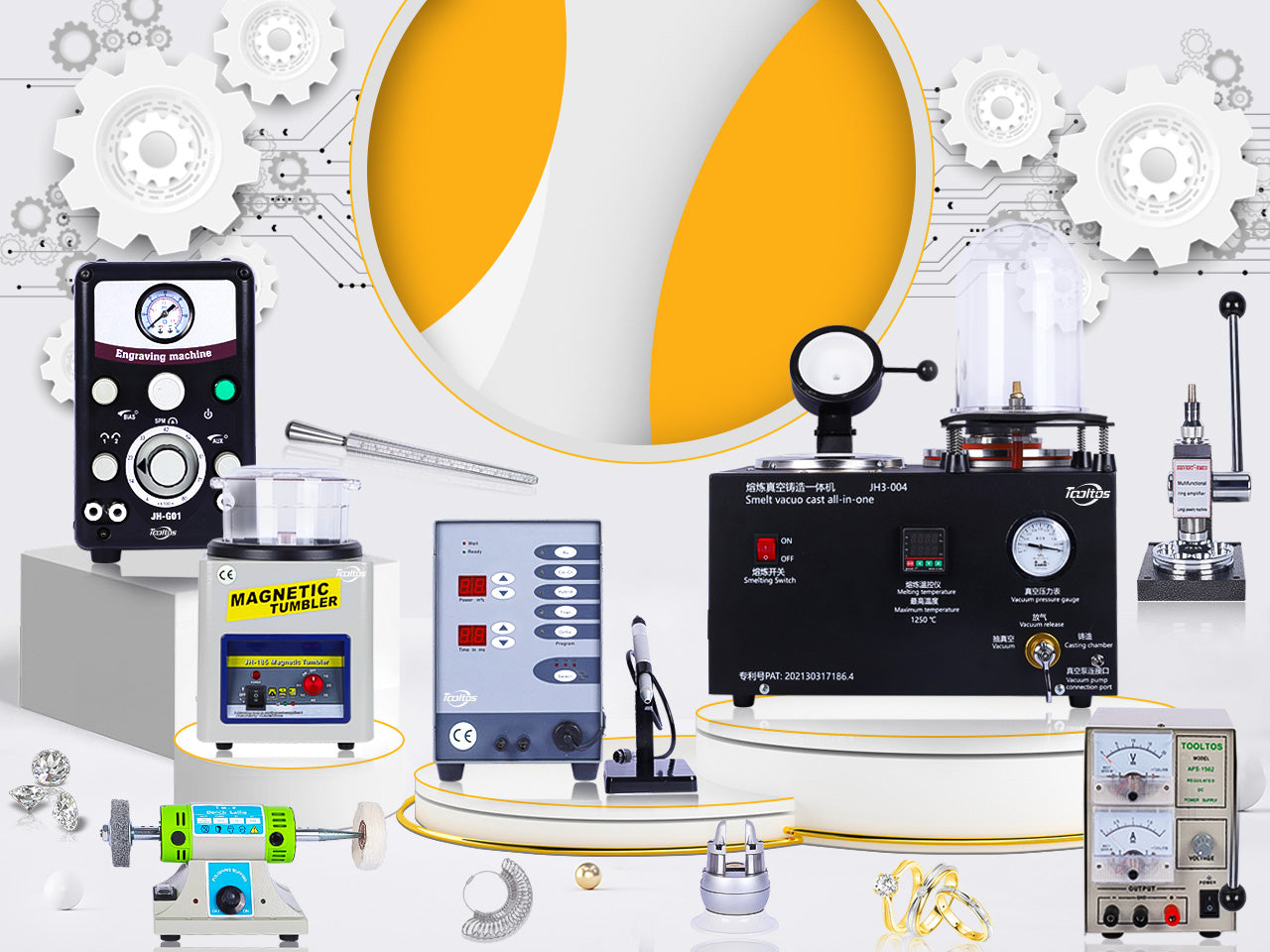Melting metal is a fundamental skill for any jeweler, whether you’re recycling scrap metal, casting new designs, or experimenting with alloys. Mastering the art of jewelry melting opens the door to endless creative possibilities. This blog will guide you through the essentials of metal melting, from tools to techniques and safety tips.
Why Melt Metal in Jewelry Making?
Melting metal allows jewelers to:
- Recycle and reuse scrap materials.
- Create custom alloys for unique colors and properties.
- Prepare metal for casting into molds.
- Experiment with freeform designs, such as organic shapes.
Whether you’re working with gold, silver, platinum, or other metals, melting is an eco-friendly and cost-effective practice that enhances your craftsmanship.
Essential Tools for Jewelry Melting
To get started, you’ll need the following tools:
-
- A heat-resistant container designed to withstand high temperatures. Crucibles come in various materials, such as graphite or ceramic, and sizes to accommodate different quantities of metal.
-
Torch or Furnace:
-
- Heatproof tongs are essential for handling hot crucibles safely.
-
- Safety goggles, heat-resistant gloves, and a fireproof apron are non-negotiable for personal safety.
-
- Used to shape the molten metal into usable forms, such as bars or discs, for future projects.
-
Flux:
- A chemical compound that prevents oxidation and impurities from contaminating the molten metal.
tep-by-Step Jewelry Melting Process
-
Prepare Your Workspace:
- Work in a well-ventilated area with a fireproof surface.
- Gather all tools and protective gear before starting.
-
Clean Your Metal:
- Remove dirt, oils, or previous finishes from scrap metal to ensure a clean melt.
-
Set Up Your Crucible:
- Place the crucible in a secure position, either on a furnace stand or heatproof surface.
-
Apply Flux:
- Add a small amount of flux to the metal in the crucible. This helps prevent oxidation and ensures a cleaner melt.
-
Heat the Metal:
- Use your torch or furnace to apply even heat to the crucible. Start with low heat and gradually increase until the metal reaches its melting point. For example:
- Silver: ~1,763°F (961°C)
- Gold: ~1,948°F (1,064°C)
- Platinum: ~3,215°F (1,768°C)
- Use your torch or furnace to apply even heat to the crucible. Start with low heat and gradually increase until the metal reaches its melting point. For example:
-
Pour the Molten Metal:
- Once the metal is fully molten and flows smoothly, carefully pour it into your mold or ingot form.
-
Cool and Quench:
- Allow the metal to cool naturally or use water to quench it (depending on the metal and project requirements).
-
Clean and Prepare:
- Remove any flux residue and inspect the metal for quality before using it in your jewelry designs.
Common Challenges and Solutions
-
Oxidation:
- Issue: Metal develops a dull or rough surface.
- Solution: Use flux and ensure a clean workspace to minimize exposure to oxygen.
-
Uneven Melting:
- Issue: Metal doesn’t melt uniformly, causing inconsistencies.
- Solution: Apply heat evenly and avoid overheating specific areas.
-
Porosity:
- Issue: Tiny holes form in the cooled metal.
- Solution: Ensure the metal is heated thoroughly and poured smoothly to reduce trapped air.
Safety Tips for Jewelry Melting
- Always wear protective gear, including goggles and gloves.
- Keep a fire extinguisher and first aid kit nearby.
- Avoid working near flammable materials.
- Follow proper ventilation practices to avoid inhaling fumes.
Creative Applications of Melted Metal
-
Custom Alloys:
- Combine different metals to create unique colors and properties, such as rose gold or green gold.
-
Organic Designs:
- Pour molten metal onto a textured surface like sand or charcoal to create organic, freeform shapes.
-
Recycled Jewelry:
- Transform old or broken jewelry into new designs by melting and recasting the metal.
-
Sculptural Pieces:
- Use sand casting or other mold-making techniques to create intricate, three-dimensional designs.
Conclusion
Melting metal is more than just a technical process—it’s an art form that allows jewelers to transform raw materials into stunning creations. By investing in the right tools, practicing proper techniques, and prioritizing safety, you can elevate your jewelry-making skills and bring your designs to life. Whether you’re recycling scrap metal or crafting custom alloys, the possibilities are endless when you master the art of jewelry melting.


0 Kommentare